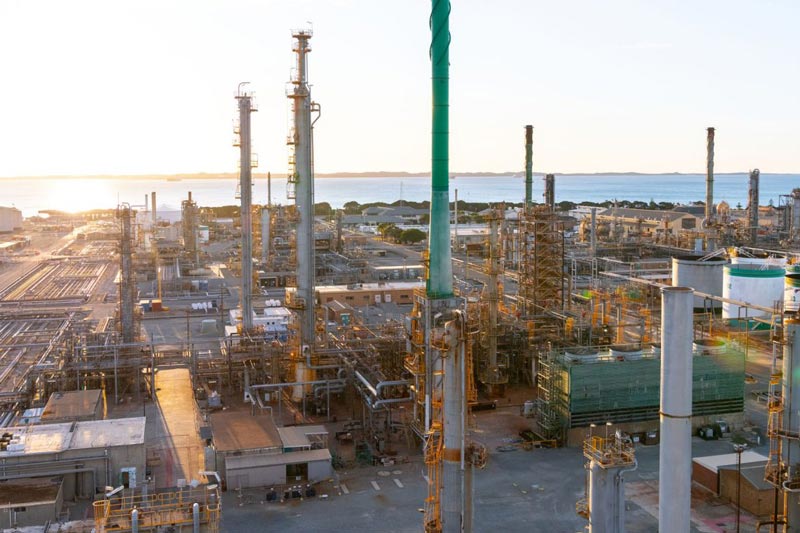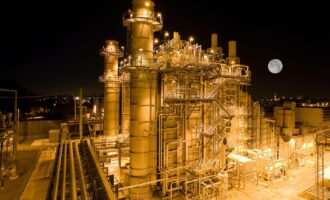
The end of oil refining in Australia?
Construction of the Altona Refinery in Melbourne began in 1946 and was completed eight years later. With operations commencing in 1949, it is one of Australia’s oldest refineries. In February 2021, following an extensive review of operations, ExxonMobil announced the refinery was no longer economically viable and the 90,000 barrel per day (bpd) Altona Refinery would be converted into an import terminal. The decision probably came as no surprise. ExxonMobil highlighted in November 2020 that the facility was operating at a loss due to the impacts of Covid-19 and talk of the closure of Australia’s smallest refinery had been swirling since 2014.
ExxonMobil pointed the finger at increasing competition from other large refineries throughout Asia. The impacts of declining domestic crude production were also influential, and there have been suggestions the significant capital investment required to upgrade the Melbourne refinery to new quality standards was a bridge too far.
Refined fuel imports will arrive at the deep-water port at Gellibrand wharf, with minor infrastructure upgrades enabling the storage of the fuel in existing tanks and the transportation of refined fuel to the Yarraville terminal along its 8-kilometre pipeline.
In August 2021, ExxonMobil confirmed that most facilities associated with the fuel refining process had been shut down and they were in the early stages of assessing potential options for future land use. A September update indicated that works on the infrastructure projects to support the storage and transportation of imported fuel will soon be finalised.
Shift to importing refined products, instead of crude oil
ExxonMobil says it remains committed to ongoing reliable fuel supply for the state of Victoria. Notwithstanding, the conversion of the Altona refinery to a fuel import terminal continues a shift in the composition of Australia’s liquid fuel supply from imported crude oil to refined products.
On October 30, 2020, bp announced it would cease production at its Kwinana refinery, the facility also being converted to a fuel import terminal. At 146,000 bpd, the West Australian refinery was the largest in Australia. The bp decision was attributed to regional oversupply, sustained low refining margins, and the “the continued growth of large-scale, export-oriented refineries throughout Asia and the Middle East.” Despite attempts by Australia’s state and federal government to persuade the British multinational to keep the facility open, the refinery closed in March 2021.
Around the turn of the century, Australia had eight refineries. In a matter of months, half of Australia’s remaining oil refineries have disappeared. Could Australia have no more crude oil refineries in the not-too-distant future? It’s not out of the question. The sole remaining crude oil facilities are the Ampol Lytton Refinery in Brisbane and the Viva Energy Refinery in Geelong. After announcing its ambition to reach Net Zero Scope 1 and 2 emissions across all operations by 2050, Viva Energy Australia said “we expect this will mean the repurposing of Geelong and its processing capability by 2050. Our aim is to balance our role in supporting Australia’s energy security, with our desire to progress the facility to net zero by 2050, at the latest.”
In 2020, there were reports that Ampol was considering the future of the 109,000 bpd Lytton Refinery due to demand weakness and persistent low refining margins. However, the company recently announced its intention to continue refinery operations at Lytton, which has been bolstered by a support package by the Federal Government designed to prevent further closures, at least through mid-2027.
Australia’s fuel security package
The fuel security package provides a variable payment to safeguard refinery earnings during periods of low margins. The package offers a Fuel Security Service Payment (FSSP) of up to AUD1.8 cents (USD1.3 cents) per litre of fuel they produce until 2030, with the maximum payment only available when the margin per barrel of oil drops to AUD7.30 (USD5.28). The government lauded the fuel security package as a vital ingredient in Australia’s recovery from the Covid-19 pandemic and to prepare against future crises. “Shoring up our fuel security means protecting 1,250 jobs, giving certainty to key industries, and bolstering our national security,” said Prime Minister Scott Morrison, in a statement at the time. The FSSP is projected to cost AUD2.047 billion (USD1.48 billion) by 2030 in a worst-case scenario.

However, the Lytton Refinery surged back into profit in the July-September period without requiring government support. Recorded earnings before interest and tax of AUD22 million (USD15.9 million) compared to a loss of AUD82 million (USD59.3 million) in the corresponding quarter last year.
Several groups have raised concerns around a growing reliance on refined fuel imports. The Maritime Union of Australia previously warned of the country’s vulnerability to supply chain disruptions in future international crises, while national employer association AI Group has called on the government to confront the severe fuel insecurity.
Some level of international disruption risk is associated with a growing reliance on imports. Though, according to some reports, more than 80% of crude oil processed in Australian refineries already comes from overseas — primarily from Asia, Africa, and the Middle East. Three-quarters of Australia’s domestic crude oil production is sent offshore to countries like Indonesia and Singapore. The reality is there is little difference in fuel security risk between importing refined fuel or crude oil. A multitude of seaborne routes to-and-from Australia ensure a reasonable level of supply chain security.
Critics have questioned the Australian government’s plans to invest up to AUD2 billion (USD1.4 billion) in subsidies in ailing fuel refineries. The Australia Institute’s quarterly National Energy Emissions Audit has previously questioned the logic of propping up old and inefficient refineries with public money and suggested it will do little to boost Australia’s fuel security. “The best way to increase Australia’s energy security in the medium term would be to reduce consumption of petrol by rapidly switching to electric passenger vehicles and focus on diesel and jet fuel supplies as the main energy security challenge,” says Dr. Hugh Saddler, energy analyst and author of the National Energy Emissions Audit.
The Australian government has recently introduced plans to reduce barriers to the uptake of hybrid, hydrogen, electric, and bio fuelled vehicles, which includes AUD250 million (USD180.8 million)) of investment in electric transport. However, no direct purchase incentives are included for private buyers of electric cars, and there is no end date for the purchase of internal combustion engine vehicles.







